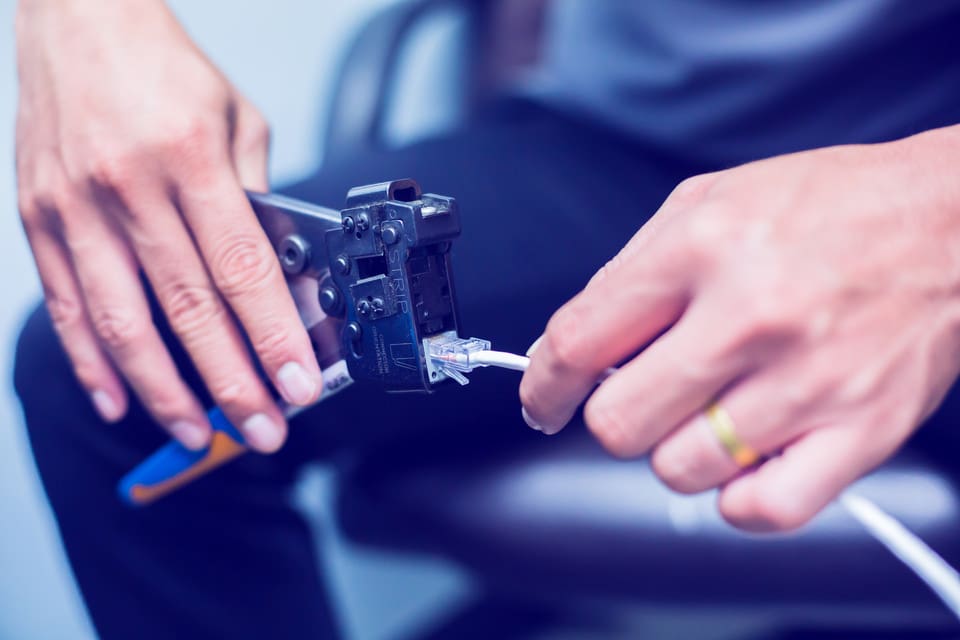Structured Cabling
What Is Structured Cabling?
Structured cabling is also defined in terms of ownership. Where the service provider (SP) ends, the structured cabling system begins. This is also referred to as the point of demarcation or the point of the Network Interface Device (NID). In other words, a service provider’s network will only reach the point where the on-site wiring begins, i.e., the customer’s home or building.
Before structured cabling, point-to-point cabling was used. With point-to-point cabling, every piece of hardware used its own cable, meaning the cabling that once allowed us to connect literally ran from point A to point B. If you’re picturing a jumbled mess of wiring behind your small yet, somehow bulky, floppy-disk accepting IBM computer, you’ve got the right idea. bandwidth, as well as a cable-free existence. Structured cabling can handle these technological advancements as it organizes the connective infrastructure of a building, campus, or community.
How Does Structured Cabling Work?
Structured cabling goes beyond having a network of cables within your data center. A structured cabling system runs throughout an entire building, campus, or community with different points and dedicated areas. The type of equipment generally associated with structured cabling includes network cabinets, racks, a cable tray, and hardware ports—just to name a few.The actual structured cabling system works via important components such as patches, switches, and trunks. The patch panels are what connect the cables and are attached to the network racks. They use cords to connect to a switch, and typically bundle all their connections to a specific network, such as a local area network (LAN).
The switches receive, process, and send the data. This is how data is shared throughout the internet. The trunk is also a cable that connects to the patch panels. Trunk cables are used to consolidate the wiring by groups, primarily for organization. The design of a structured cabling system is defined by a set of standards that dictate how their data centers, office buildings, and campuses are wired for voice and data communications. The most common cables used for structured cabling are CAT 5, CAT 6, and other fiber optics and modular connectors that allow for the entire network to communicate. These network cabling standards are actually used internationally and are governed by the Telecommunications Industry Association (TIA). The types of cables in your structured system will depend on your usage and needs.

Installation: The Subsystems of a Structured Cabling System
In addition to those two standards, there are six sub-standards that further dictate your structured cabling system: Entrance facilities (EF), equipment room (ER), backbone cabling, telecommunications room (TR) and telecommunications enclosure (TE), horizontal cabling, and work area (WA).
Backbone Cabling
Cabling Subsystem 2:
Cabling Subsystem 3:
Entrance Facilities (EF)
Equipment Room (ER)
407-240-3890
Telecommunications Room (TR) and Telecommunications Enclosure (TE)
The TR and TE essentially serve the same purpose, but are more specific implementations rather than a general necessity. Some buildings require a TR or TE per floor while others do not.
With technicians located throughout the United States we can provide communication solutions to accommodate your business requirements. With today’s continually changing communication environment, you will need to consider multiple options when designing and implementing a solution that will enable you to meet your specific requirements now and in the future.
Horizontal Cabling
Work Area (WA)
Each WA typically has a minimum of two telecommunications outlets that serve as permanent links. It also usually provides the necessary amount of multi-user telecommunications outlet assemblies (MUTOAs).



